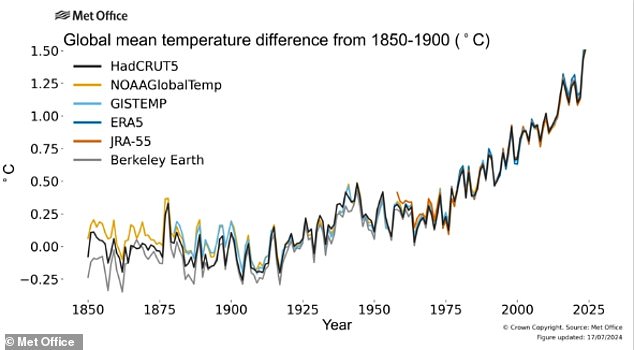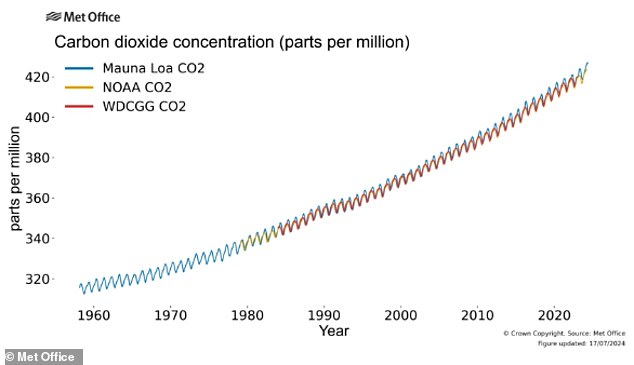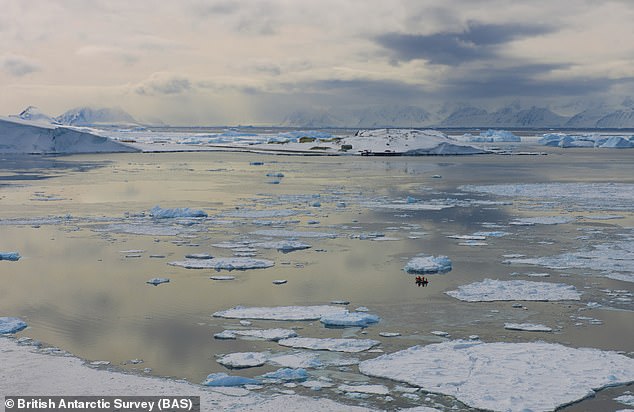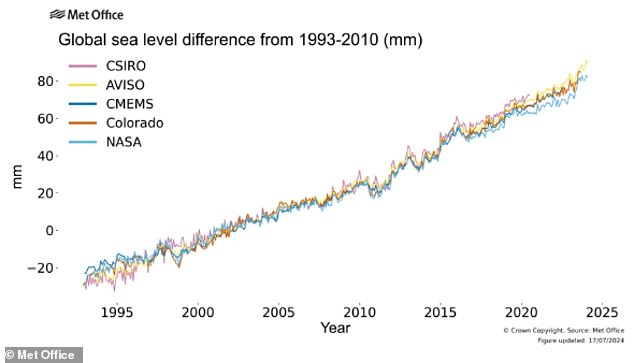Damning climate change report reveals how records were broken for greenhouse gas concentrations, global temperatures and sea level rise last year – as experts warn ‘2023 will remain in climate record memory for a long time’
A damning climate change report confirms that 2023 was a year of new climate records.
The report, titled State of the Climate, found that greenhouse gas concentrations were the highest ever recorded last year, with carbon dioxide (CO2), methane and nitrous oxide all reaching their highest atmospheric levels on record.
2023 was also the warmest year since records began in the mid-1800s, surpassing the previous record set in 2016.
Meanwhile, average sea levels in 2023 were the highest on record for the twelfth consecutive year.
Dr Robert Dunn, operational meteorologist at the Met Office and one of the report’s authors, said: ‘2023 will be remembered for a long time in climate records.’
A damning report on climate change has confirmed that 2023 was a year of new climate records. Pictured: Forest fires in Greece on July 19, 2023

2023 was also the warmest year since records began in the mid-19th century, surpassing the previous record set in 2016.
The report was coordinated by NOAA’s National Centers for Environmental Information and is based on contributions from more than 590 scientists from around the world.
Six major climate change records broken in 2023 are highlighted: greenhouse gas concentrations, global temperature, sea surface temperature, ocean warmth, sea level, and Antarctic sea ice.
Concentrations of greenhouse gases, including CO2, methane and nitrous oxide, were the highest ever recorded, while the average surface temperature was 1.46°C above pre-industrial levels.
The last seven months of 2023 (June through December) were also individually the warmest on record.
The average sea surface temperature was 0.13°C higher than the previous record, largely due to a series of marine heat waves.
“In total, 94% of the global ocean surface has experienced at least one marine heatwave,” the report said.

Concentrations of greenhouse gases – including CO2, methane and nitrous oxide – were the highest ever recorded, while the global average surface temperature was 1.46°C above pre-industrial levels

Antarctic sea ice reached a historic low in 2023. Pictured: Marguerite Bay in October 2023
The ocean’s heat content – the measure of the warmth of the sea surface down to a depth of two kilometres – was the highest ever recorded, while the average global sea level in 2023 was the highest ever recorded for the twelfth consecutive year.
Ultimately, Antarctic sea ice reached a historic low in 2023.
“The warmth of the tropical Pacific Ocean, caused by a strong El Niño, brought warmth to the planet’s atmosphere, making 2023 a warm year,” Dr Dunn explained.
‘We’ve had El Niños before, but last year stood out because El Niño coincided with other events, such as the North Atlantic heat wave and the lowest Antarctic sea ice extent on record.

Global average sea level was highest on record for the twelfth consecutive year in 2023
‘For 34 years, this annual report has charted the progress of climate change through precise analyses of Earth observations.
‘The increasing concentrations of greenhouse gases in the atmosphere are causing ever higher temperatures.
‘And in 2023, the impact of these higher temperatures on other parameters of our climate system became clear, for example with more than 1 kg of additional atmospheric water vapour per square meter of Earth’s surface compared to the long-term average, and yet also a record large area of land under extreme drought conditions.’
The report also shows that plants around the world are responding to the warmer conditions.
In the Arashiyama district of Kyoto, Japan, the full bloom of cherry trees occurred on March 14 — the earliest date in more than 1,200 years.
The researchers hope the findings will be a wake-up call to the urgent need to reduce global greenhouse gas emissions.
‘Natural variability in the climate system – such as that caused by El Niño – will account for a modest amount of annual variation, but until we see greenhouse gas concentrations in the atmosphere start to decline, further records are likely before the end of the decade,’ Dr Dunn added.
